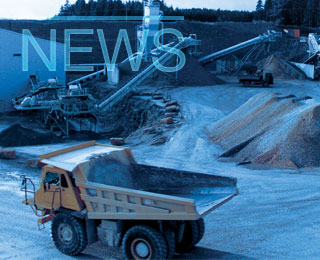The Brazilian cement market expanded by 4.2 per cent YoY to 4.615Mt in February 2024 from 4.429Mt in February 2023, reports the country’s cement association, SNIC.
Looking at sales per working day – the number of days worked has a strong influence on cement consumption – sales slipped 0.9 per cent YoY in February to 0.22Mt from 0.222Mt a year earlier.
The key drivers to the uptick in sales include more favourable prospects in the labour market, with an increase in the wage bill and expansion of formal employment. Nevertheless, workers’ salaries are only slow recovering, with real values remaining below 2020 levels, when there was pandemic-related support available.
However, confidence indicators move in opposite directions between optimism and pessimism, said SNIC. According to the Fundação Getúlio Vargas, consumer confidence maintained its downward trend, reaching the lowest level since May 2023. Despite the gradual reduction in interest rates and the level of debt, both still impact the financial situation of families, which is reflected in the pessimistic perception of consumers.
Furthermore, construction confidence rose in February, reaching the highest level since October 2022, but continues to linger in the moderate pessimism area, reported SNIC. The lack of labour and access to credit are still identified as the main limitations to the sector's development.
Geographical breakdown
In the southeast, Brazil's largest market which includes Saõ Paulo and Rio de Janeiro, sales declined by 0.6 per cent YoY to 2.041Mt from 2.053Mt in February 2023. It was the only market to record a contraction in February. In the northeast, the second-largest market, sales increased by five per cent YoY to 0.931Mt in February 2024 from 0.887Mt while in the south sales advanced by 10.9 per cent YoY to 0.884Mt from 0.797Mt over the same period. Off-take in the central-west increased by 6.7 per cent YoY to 0.542Mt from 0.508Mt in February 2023. The north, the smallest market, saw deliveries increase by 17.9 per cent YoY to 0.217Mt from 0.184Mt in February 2023.
Exports from Brazil declined by 55 per cent YoY to 9000t in February 2024 from 20,000t in February 2023.
January-February 2024
Cement sales for the first two months of 2024 grew a modest 0.9 per cent YoY to 9.398Mt compared to 9.298Mt over the same period of 2023. Sales per working day during this period were down 1.4 per cent YoY and sales in the southeast slipped 0.8 per cent YoY to 4.162Mt in the 2M24.
The lacklustre start to the year in domestic sales reflects the ongoing slow recovery in household spending, despite a seven per cent rise in the minimum wage to BRL1412 on 1 January, and amid lingering high inflation. The inflation rate was 4.5 per cent YoY in January 2024, according to the national statistics office, IBGE, down from 4.6 per cent YoY in December, but well above the central bank’s target rate of 3.25 per cent. Weak purchasing power is limiting demand for construction materials and new housing.
Exports remained neglible, totalling 17,000t over the first two months of 2024, down 61.4 per cent YoY.
Outlook
However, the outlook for 2024 sees a return to growth for the cement industry. SNIC is forecasting an expansion of two per cent in sales to 62.97Mt. This follows a contraction of 1.4 per cent in 2023, with sales of 61.77Mt, adding to the 2.7 per cent decline reported in 2022. The resumption of infrastructure and housing projects through the government’s Minha Casa, Minha Vida (My House, My Life) programme will help drive demand. The nationwide programme aims to build 2m new housing units by 2026.
“There is a consensus in the country that investment in infrastructure is a necessary condition for the resumption of socioeconomic growth, currently one of the main obstacles affecting our competitiveness. Concrete pavement has gained ground in several regions as a competitive solution in terms of costs, environmental gains, quality for users and the best use of public and private resources. In addition to being more economical and sustainable, it has a long durability, which can reach 30 years, and reduces maintenance,” said SNIC President, Paulo Camillo Penna.
Published under Cement News

